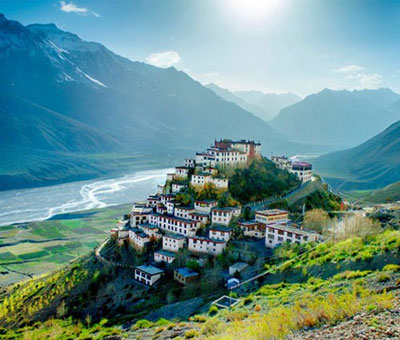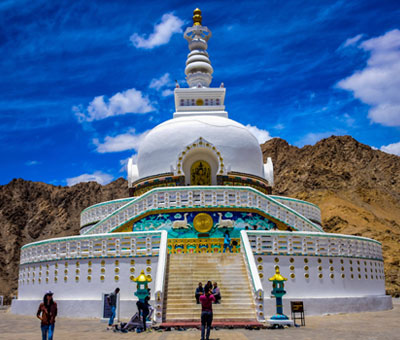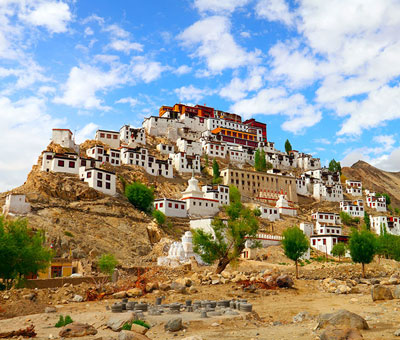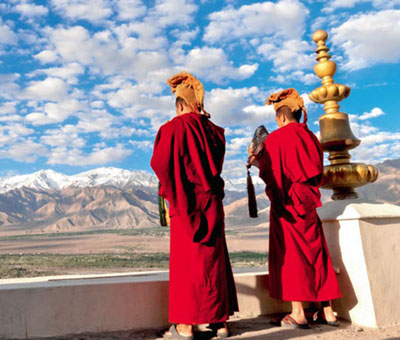Tips on Road Trip Manali to Leh
This is the road to heaven. A road that challenges your spirit and numbs your mind with its undisturbed solitude and raw beauty. It is the second highest motorable road in the world, climbing through daunting mountain ranges beyond which only the vast expanse of the deepest blue skies is visible, with nothing between them and the heavens.
Manali – Keylong/Jispa
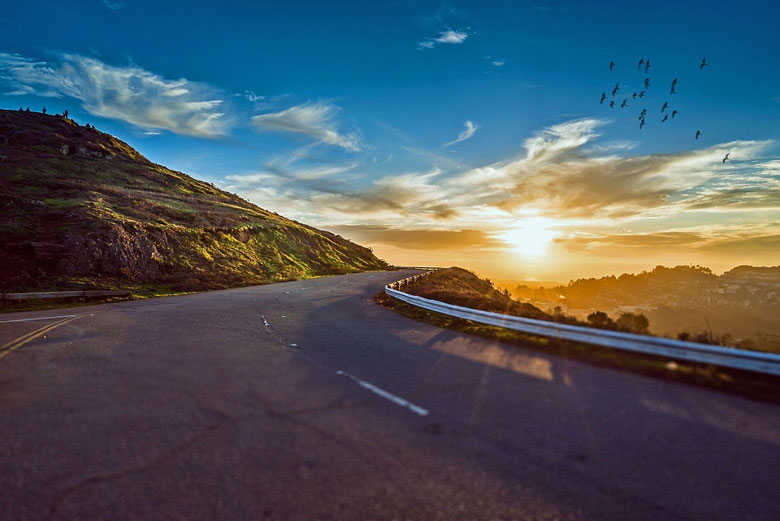
Manali Keylong Jispa
To get there you ideally need a four-wheel drive vehicle, or one with high ground clearance. Proceed from Manali to Rohtang La, the first of the many high passes at 3978 metres, which marks your passage from a dense green to bare and rocky countryside. You have now entered the ‘end of the habitable world’, a high altitude desert that is above the tree line and completely at the mercy of Mother Nature. When She is furious you have cold and fast winds, dust storms, blizzards and landslides. When She is calm you have the clearest skies and most wonderful sights ever seen. Depending on Mother Nature’s moods, your drive can be delightful or dangerous, but it’s always dramatic. It’s a theatre like no other, where man is just a silent spectator and pulls no strings.
Leh Ladakh Tour Packages
Pricing and Itinerary
At Grampho, the road on right branches off to the Kunzum pass that leads to Spiti. You carry on straight to Tandi where the only fuel station on this entire route is located. Fill your tanks and Jerry cans, before proceeding to Keylong or Jispa to rest and get acclimatized to the high altitude. A night or two spent relaxing at over 3000 metres, should prepare you for the demanding journey ahead.
Road Trip Manali to Leh – Keylong/Jispa – Tso Moriri

Tso Moriri
The curtain unfolds and the road that is broken and unpaved in some places follows the Bhaga River to its source at Baralacha La, the first Great Himalayan pass at 4892 metres. At the summit, stands the stunning Suraj Tal Lake from where the Bhaga originates. Stop to absorb the beauty but don’t stay too long, else the lack of oxygen at these high altitudes will give you a headache and leave you feeling sick. One rule you should remember on this journey ‘climb high but come down soon’. Before the next high pass is Sarchu, which is a popular halting place
and has several tented camps and eating-places. Now you have crossed over into the Great Himalayas and the barren landscape becomes positively lunar, dusty plains covered with scattered boulders and only the rare patch of pasture to remind the traveller of the existence of vegetation in this world. Road Trip Manali to Leh Ladakh…
The Lachlung La at 5060 metres, is the next summit and then the road descends into the wide, open and flat, windswept plateau of Pang, also known as the Morey plains. The flat and smooth surface of this sandy high altitude desert, gives you the option of leaving the road and making your own path. “One cannot appreciate what one has not encountered”, and racing across this exotic and unique land is so exhilarating and exciting, that every driving enthusiast should experience it at least once. Road Trip Manali to Leh Ladakh…
At the next road junction you could take the road on right for Tso Kar and Tso Moriri or proceed straight to Leh. The going gets rough now and you should only head into this wilderness if you are well equipped and have made arrangements for camping in advance.
Road Trip Manali to Leh Ladakh – Tso Moriri – Pangong Tso
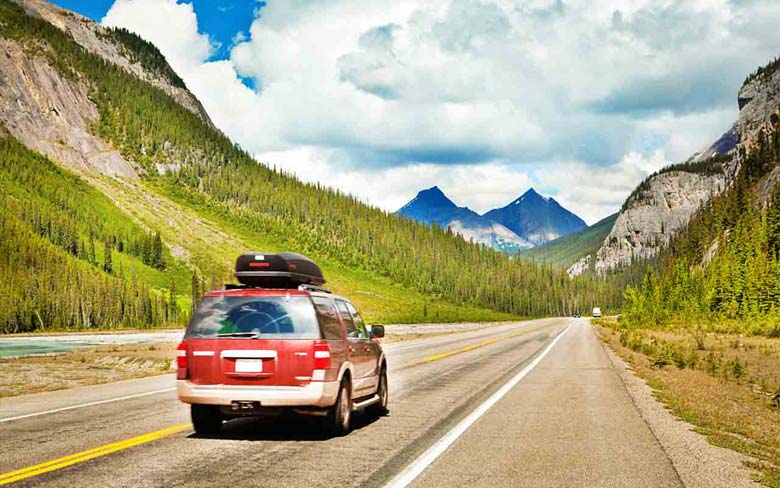
Pangong Tso
It’s time to go from one incredible place to another. Return to the road junction and rejoin the Manali to Leh road. Motor through rock and sand, rolling brown hills and broad plains scoured by dust devils to the second highest pass on this route, Taglang La, at 5328 metres. Once over this pass the road comes down into the plains of the Indus, and at Karu you turn right to Pangong Tso. Then it’s onto the highest pass on this road, Chang La at 5475 metres, which despite it’sgreat elevation is one of the easier passes. Drive on to be greeted by one of the most magnificent sights, Pangong Tso.
Pangong Tso to Leh

Pangong Tso to Leh
Having seen some of nature’s finest t creations, it’s now the turn of some works of man. Retrace your route back to Karu and head for Hemis which is the largest and most famous and visited monastery in Ladakh. The road to Leh is lined with string of monasteries – stock, Shey and Thikes. Takes your pick and climb the last slope into Leh, where several more attractions await you.
Leh Ladakh to Manali

Leh Ladakh to Manali
Located at an altitude of 1830 metres, the hill-station of Manali is placed at the end of the Kullu Valley, which is about 80 kms long and just 2 km wide! The River Beas and its tributaries slice through this valley made up of grassy meadows carpeted with wild flowers, hills covered with rich deodar forest and apple orchards blossoming in the shadow of the Himalayas.
The Kullu valley is also famous for its bhang (marijuana), which grows wild here. And because of this, ever since the days of the hippie movement, Manali and its sister town Kullu, have been part of the ‘happening scene’.
Manali has now also become a popular base for trekking and mountaineering in summer and skiing in winter. The influx of both foreign and domestic tourists has led to the mushrooming of hundreds of hotels and guesthouses and brought in rampant commercialization in its wake. But the neighbouring town of Nagar is still largely unspoilt and the 500-year-old Nagar Castle here is now an atmospheric heritage hotel run by Himachal Tourism. This impressive structure built from stone and wood stands tall even today as a testimony of the earthquake resistant properties of the local architecture, and offers a great view of the Himalayas. Road Trip Manali to Leh Ladakh…
It is also believed that Nagar is the seat of the Gods and that in the event of any crisis, all the Gods gather at the small Jagati Pat temple situated in the courtyard of the castle. Another attraction of Nagar is the home of the renowned Russian painter Nicholas Roerich, which is now a museum displaying his paintings of the Himalayas and several folk carvings. The largest angora farm in Asia is also located Kullu, and you should shop for the woolen shawls made from angora rabbits that this region is famous for.
Leh to Keylong/Jispa

Leh to Keylong
Keylong, the district headquarters of Lahaul rests at a height of 3350 metres and is a good place to break journey and get acclimatized to the high altitude. An early English traveller described it as a barbaric jewel, “a rough cut emerald in a bronze and sliver setting”.
The appropriately named Hotel Chandcrbhaga in Keylong is set amidst a landscape of barren brown slopes and the cascading silvers streaks of the rivers Chandra and Bhaga that merge here and become the Chenab on entering Kashmir. The Hotel Ibex is 25 kms away in Jispa and the Bhaga River flows by it. Both offer fairly decent rooms and are nice places to rest and prepare yourself for the tough and physically demanding onward journey.
Leh Ladakh to Tso Kar/Tso Moriri

Leh Ladakh to Tso Kar
Ladakh was once covered by an extensive lake system, the vestiges of which still exist in drainage basins with evocative names like Tso Kar and Tso Moriri, both of which are located on the cold high altitude arid desert plateau of Rupshu.
Surrounded by barren hills with the staggering backdrop of snow covered Himalayan peaks, is brackish Tso Kar, or “White Lake”. A little further south is the Tso Moriri salt-water lake, h is about 28 km long and 8 km wide. In this desolate desert, where the towering mountains , aloof and forbidding, drenched in the mystique of their time shrouded secrets and mysteries, these deep blue lakes sparkle and standout like diamonds and sapphires. These immensely beautiful lakes also support a lot of bird life and are the breeding grounds of the bar-headed geese, which can be seen in large numbers at Tso Moriri.The other birds found here include the Brahmini duck, brown-headed gull, great crested grebe, etc. Road Trip Manali to Leh Ladakh…
With its handful of houses and a monastery, the tiny village of Korzok situated at 4572 metres, is the only permanent settlement in this sparsely populated region. The only other inhabitants of this amazingly bare and stunning land are the nomadic Chang-pa herdsmen and their flock of pashmina goats, sheep, yaks, horses and dogs. Surprisingly, you also find a reasonable amount of wildlife and the endangered wild ass locally known as Kyang, is quite easy to spot as it races along the flat seemingly unending plains that appear to be timeless. It is also possible to sight the cuddly marmot, wily fox, and an unusual tailless rat. Tourists need permits to visit this region and some tour operators organise these and also provide tented accommodation.
Leh Ladakh – Pangong Tso
At 4267 metres, Pangong Tso is the highest lake in Ladakh and the largest brackish water lake in Asia. it is practically an inland sea that Is 150 km long and only 5 to 8 km wide. The India it and a third of it lies in China. Road Trip Manali to Leh Ladakh…
Unmatchable in terms of sheer breathtaking beauty, the salty turquoise blue Pangong Tso Lake is the ‘Jewel of the Himalayas’ and cannot be compared to any other lake, river or sea Glaciers and the Changchenmo Range of Himalayan Mountains, their reflections shimmering and shining in the ever-changing blue green waters, surround Pangong Tso, and as you stand before it, delight slowly give way to awe. Words fail you and no description does justice to this hunting and overpowering landscape. You simply surrender yourself to the overwhelming beauty until slowly the realization dawns, that this can only be the creation of the supreme artist himself, God. And fortunately, there are no works of man and even fewer signs of his presence in this pristine desert land. Once again tourists need permits to visit this region, for which they have to contact a tour operator or travel agent who will also provide them with tented accommodation on request.
Road Trip Manali to Leh

Road Trip Manali to Leh
Ladakh is a land like no other. Bounded by two of the world’s mightiest mountain ranges, the Great Himalaya and the Karakoram, this is the highest inhabited region in India and its raw beauty is matchless. Snow draped peaks rise above the clouds, while below them lie, cold-and arid high altitude deserts, vast glaciers, multi-hued hills sculpted by the forces of nature, dusty valleys adorned with lunar like rock, formidable mountain passes and high paths, rushing rivers and shimmering lakes, monasteries and palaces and small villages clinging to the steep and barren hills. Not just the landscape, the climate in Ladakh is also unique. The Great Himalayan Range cuts it off from the Indian monsoon and it is the melting snow that sustain life. The sun shines for over 300 days and the thin air at these high altitudes makes the heat of the sun even more intense. It is said that only in Ladakh, can a man sitting in the sun with his feet in the shade, suffer from a sunstroke and frostbite at the same time!
Situated on the banks of the Indus at a height of 3521 metres, Leh the capital of Ladakh though remote, has never been totally isolated and for centuries it was an important halt on the ancient trade route with Central Asia. Its character changed completely after 1974, when it was thrown open to foreign tourists. Now it is one of the most popular tourist destinations in India with hundreds of hotels and restaurants, an airport that is the only means of access in the winter months, and several tour operators who organize safaris to the less easily accessible places in Ladakh. Fortunately, Leh remains a breathtakingly beautiful place with many amazing ancient monuments, lamas draped in colourful robes, romantic bazaars offering a multitude of marvelous goods, and a distinct Tibetan flavour where even solemn religious ceremonies become occasions for joyous celebrations. Festivals and fun, smiles and skin wrinkled in the sun, the simple people of Ladakh have an inherent spirit of joie-de-vivre and as a result, the traveller to this once ‘forbidden land’, is assured of a warm welcome and a wide array of rewarding experiences.
For more information on road trip, Manali to Leh Ladakh contact Swan Tours – One of the leading Travel Agents in India, Some links which would give details of holiday packages in Manali, Kashmir and Leh Ladakh are as below:




